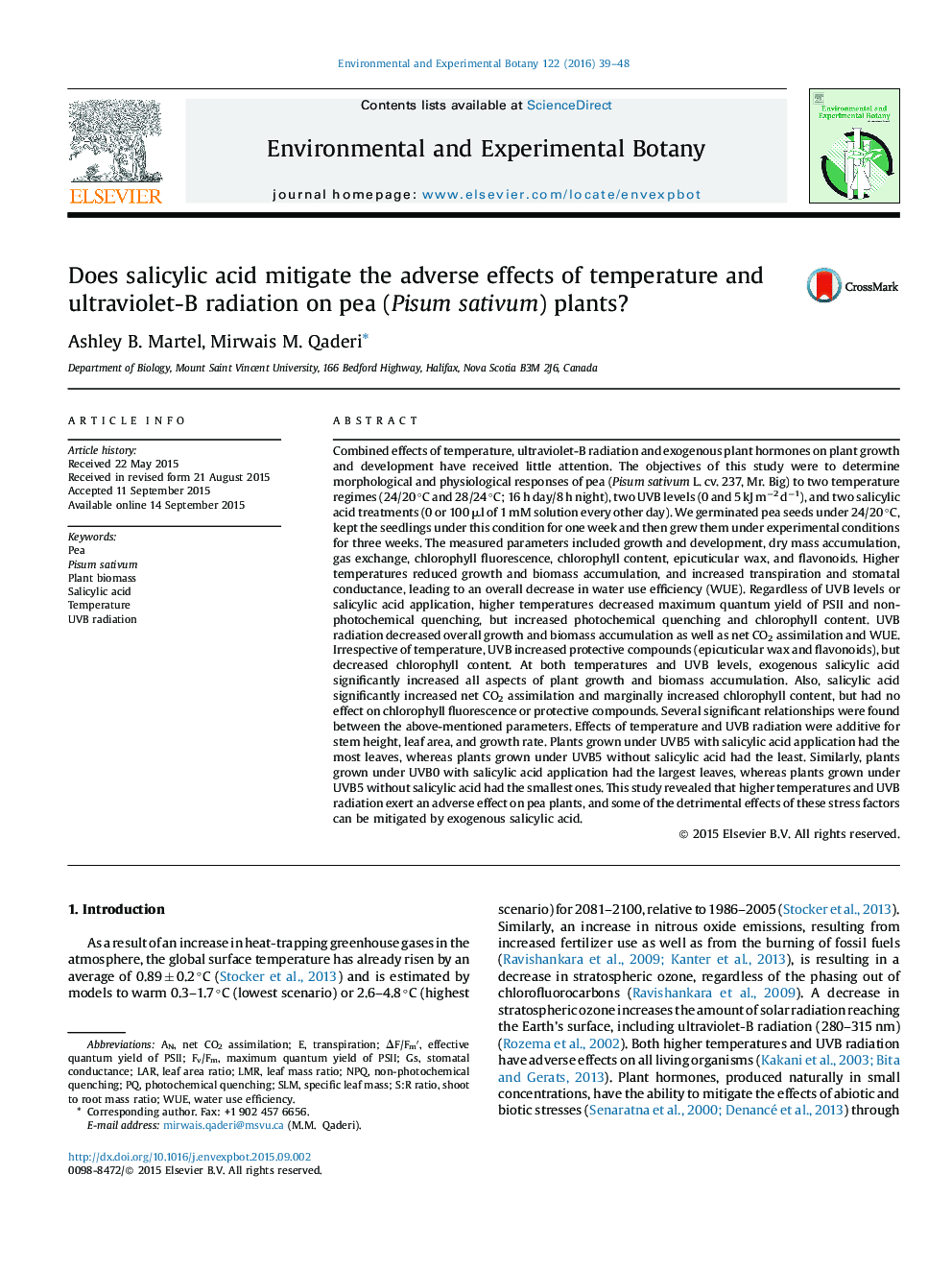| Article ID | Journal | Published Year | Pages | File Type |
|---|---|---|---|---|
| 4554161 | Environmental and Experimental Botany | 2016 | 10 Pages |
•Studies on potential mediators of temperature and UVB stresses are important.•Effects of temperature and UVB were additive on plant growth and development.•Salicylic acid partially mitigated effects of temperature and UVB on plant growth.•Interactive effects of these factors were significant for some plant parameters.•This study has important implications for future success of crop species.
Combined effects of temperature, ultraviolet-B radiation and exogenous plant hormones on plant growth and development have received little attention. The objectives of this study were to determine morphological and physiological responses of pea (Pisum sativum L. cv. 237, Mr. Big) to two temperature regimes (24/20 °C and 28/24 °C; 16 h day/8 h night), two UVB levels (0 and 5 kJ m−2 d−1), and two salicylic acid treatments (0 or 100 μl of 1 mM solution every other day). We germinated pea seeds under 24/20 °C, kept the seedlings under this condition for one week and then grew them under experimental conditions for three weeks. The measured parameters included growth and development, dry mass accumulation, gas exchange, chlorophyll fluorescence, chlorophyll content, epicuticular wax, and flavonoids. Higher temperatures reduced growth and biomass accumulation, and increased transpiration and stomatal conductance, leading to an overall decrease in water use efficiency (WUE). Regardless of UVB levels or salicylic acid application, higher temperatures decreased maximum quantum yield of PSII and non-photochemical quenching, but increased photochemical quenching and chlorophyll content. UVB radiation decreased overall growth and biomass accumulation as well as net CO2 assimilation and WUE. Irrespective of temperature, UVB increased protective compounds (epicuticular wax and flavonoids), but decreased chlorophyll content. At both temperatures and UVB levels, exogenous salicylic acid significantly increased all aspects of plant growth and biomass accumulation. Also, salicylic acid significantly increased net CO2 assimilation and marginally increased chlorophyll content, but had no effect on chlorophyll fluorescence or protective compounds. Several significant relationships were found between the above-mentioned parameters. Effects of temperature and UVB radiation were additive for stem height, leaf area, and growth rate. Plants grown under UVB5 with salicylic acid application had the most leaves, whereas plants grown under UVB5 without salicylic acid had the least. Similarly, plants grown under UVB0 with salicylic acid application had the largest leaves, whereas plants grown under UVB5 without salicylic acid had the smallest ones. This study revealed that higher temperatures and UVB radiation exert an adverse effect on pea plants, and some of the detrimental effects of these stress factors can be mitigated by exogenous salicylic acid.
